Abstract
Two illustrative molecular models, designed to explain the Cole-Moore K+ hyperpolarization delay, are proposed and analyzed. Both introduce a process supplementary to the usual Hodgkin-Huxley (HH) one for a K+ channel. In both cases the new process becomes involved as a consequence of the conditioning hyperpolarization of the membrane and would account for the observed delay time in the K+ current after depolarization to near ENa. The first model uses adsorption or desorption of phospholipid molecules on the surface of the assumed protein K+ channel or gate. The second model involves the translocation of the charged subunits of the channel in the hyperpolarizing electric field.
Full text
PDF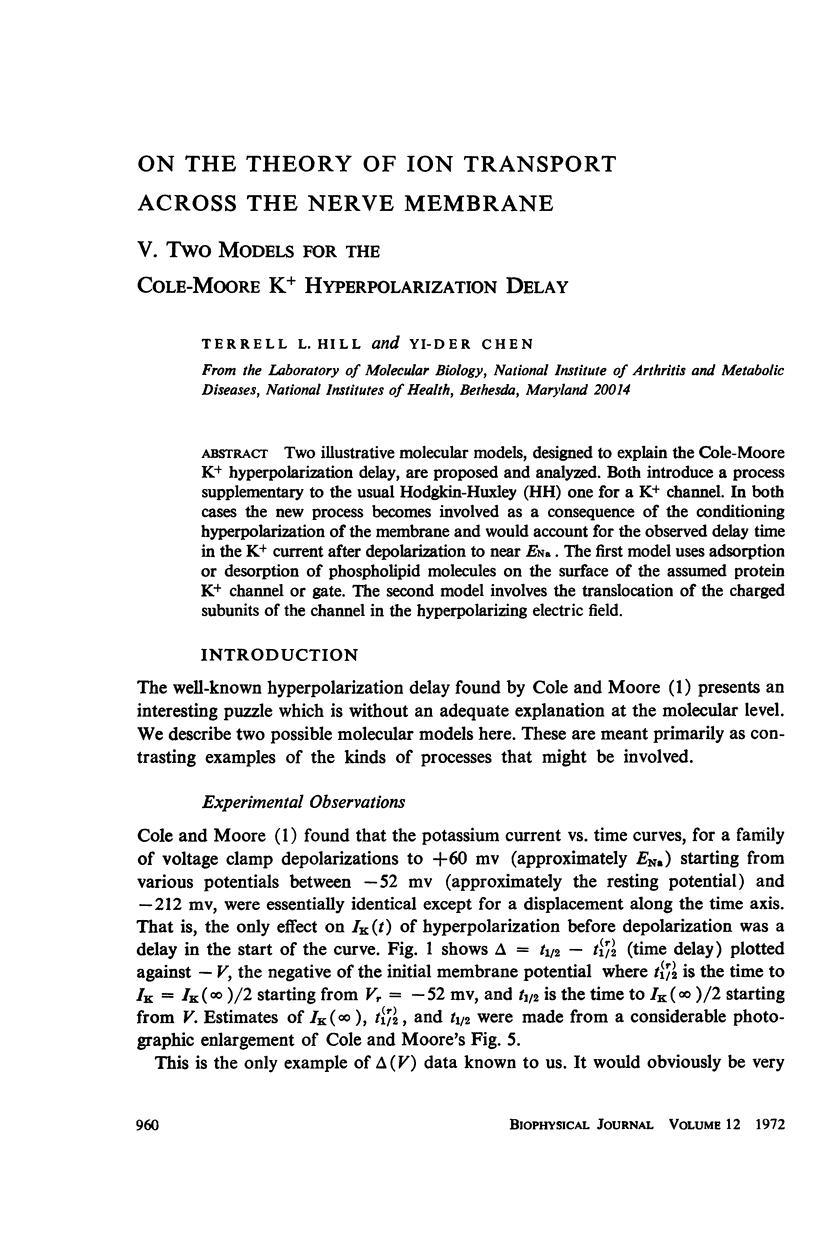
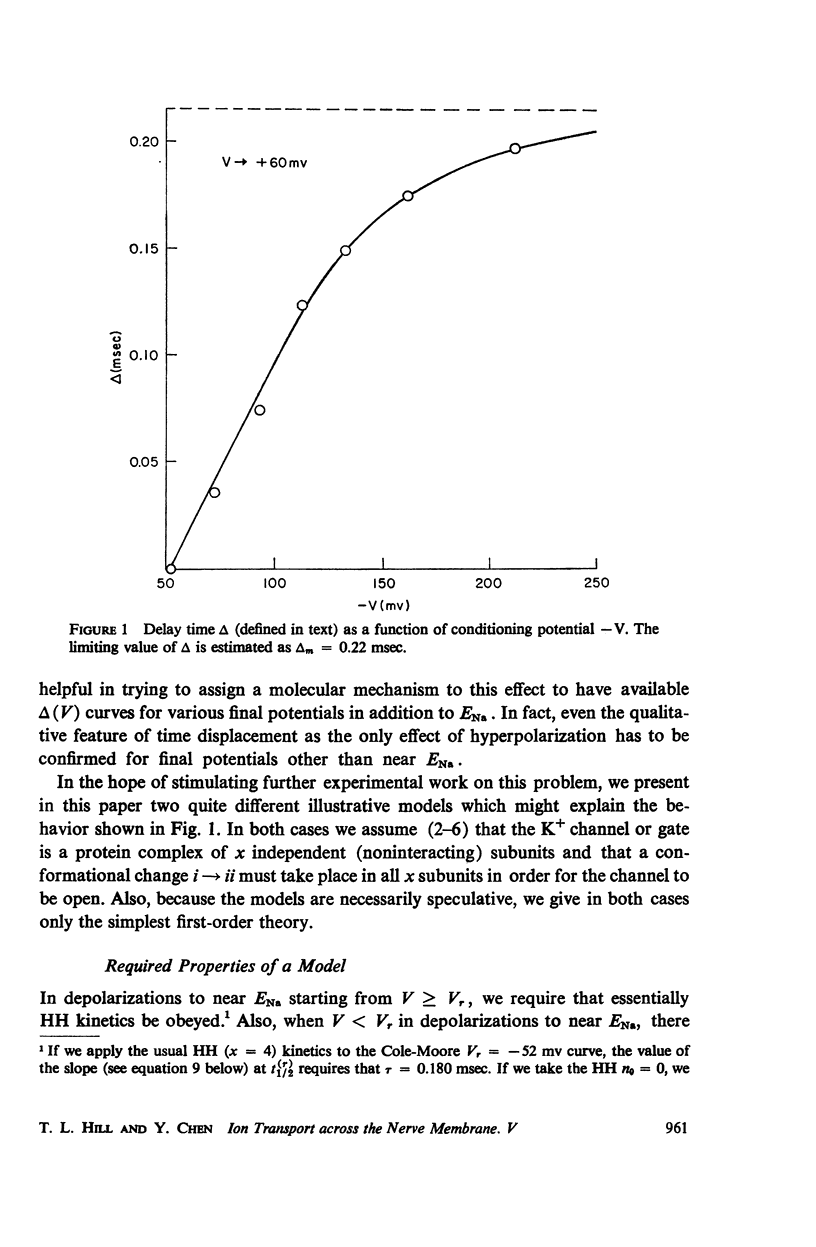
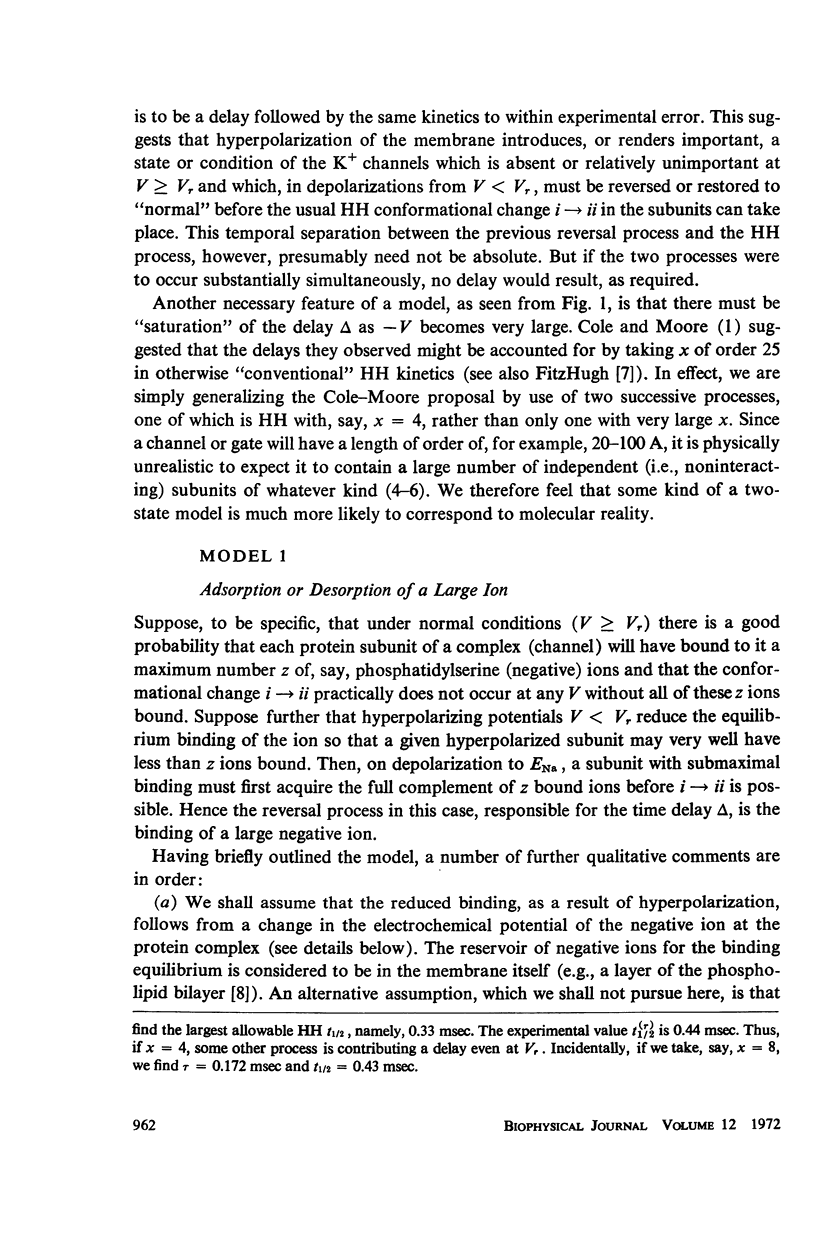
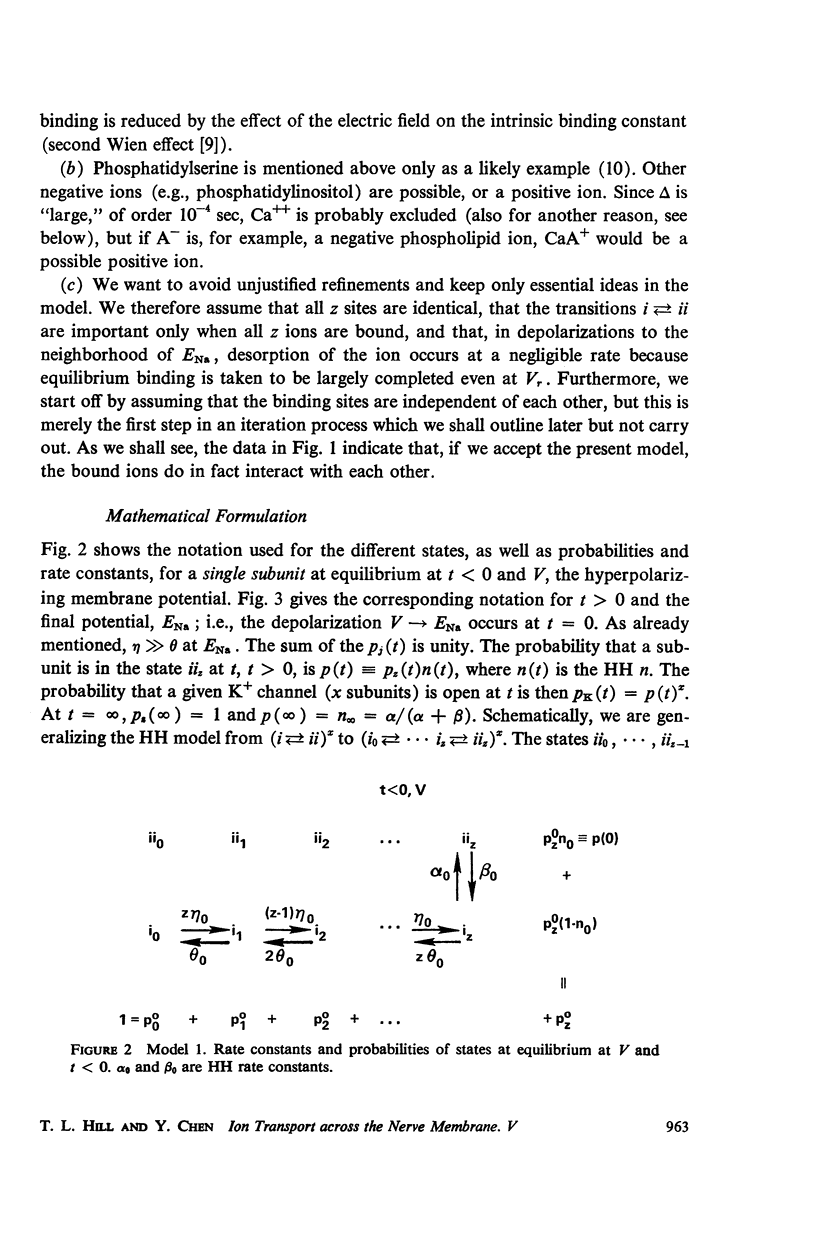
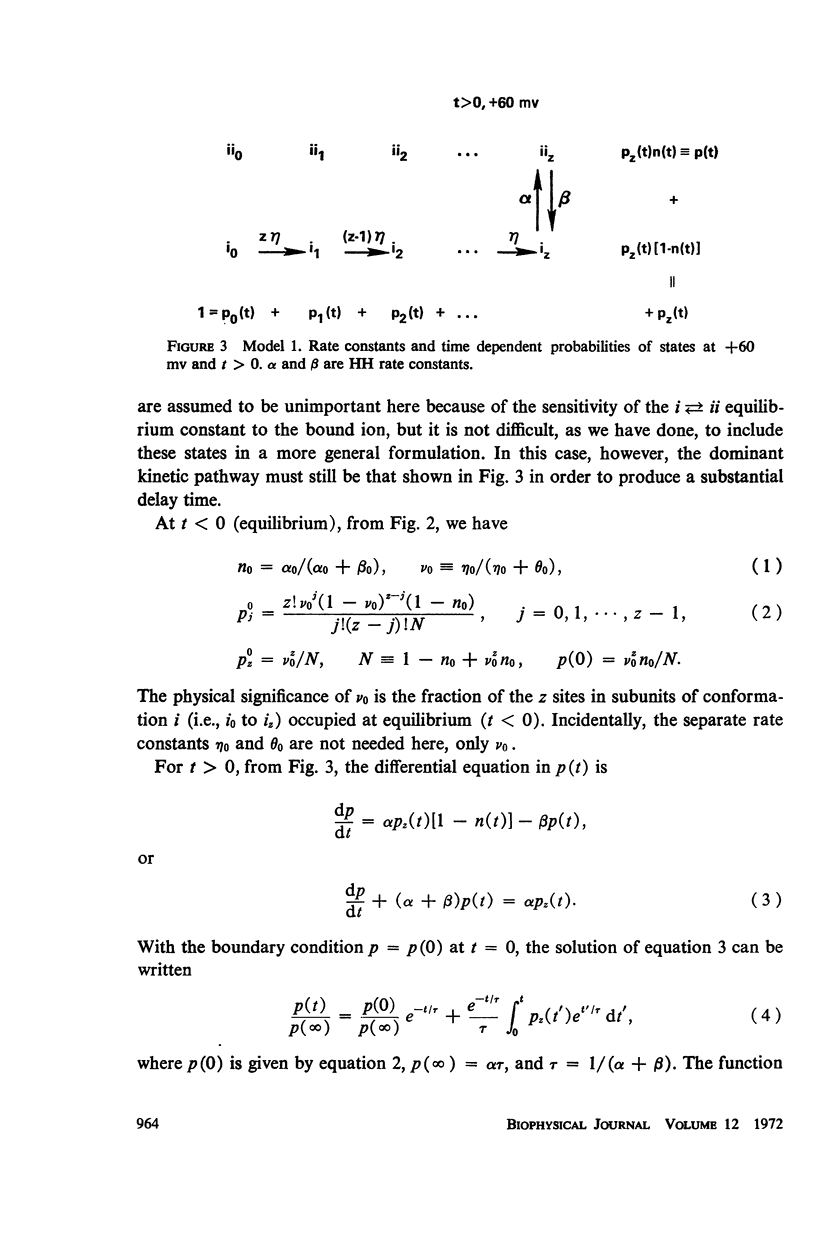
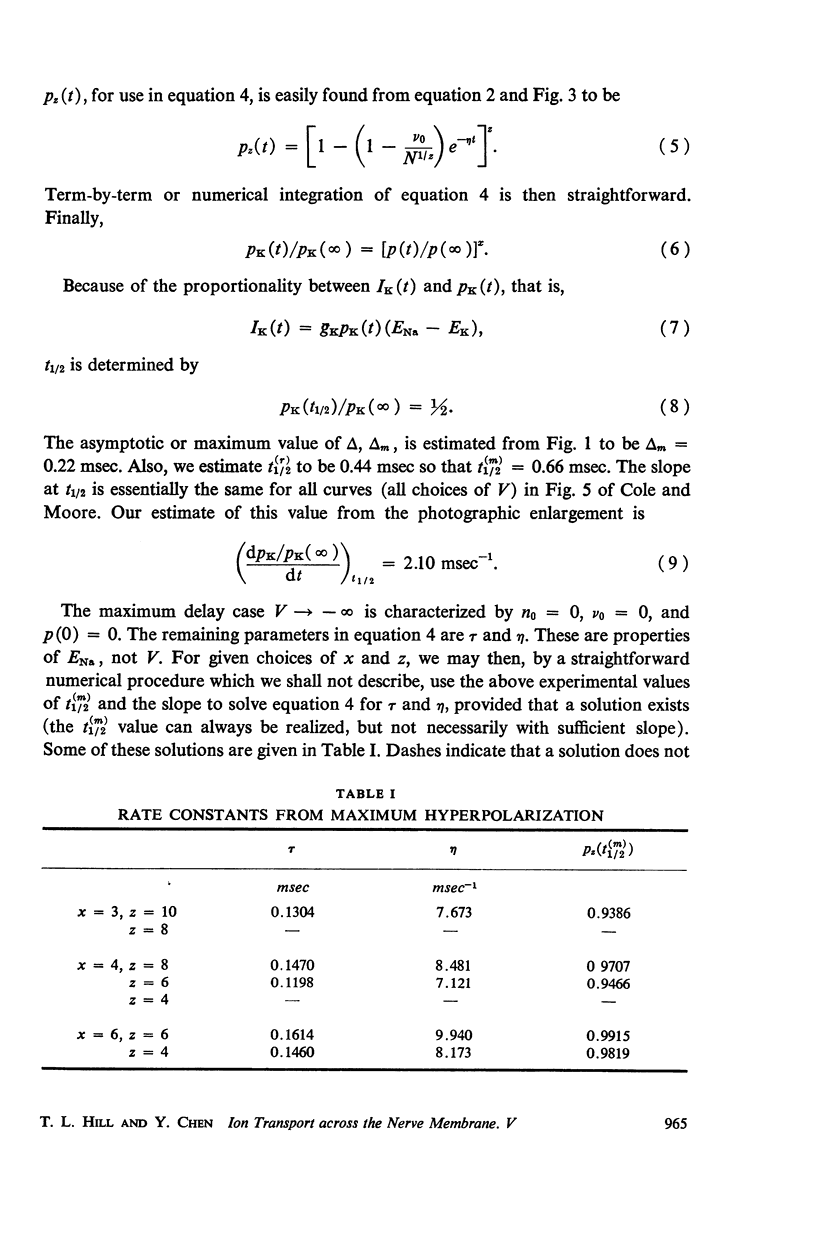
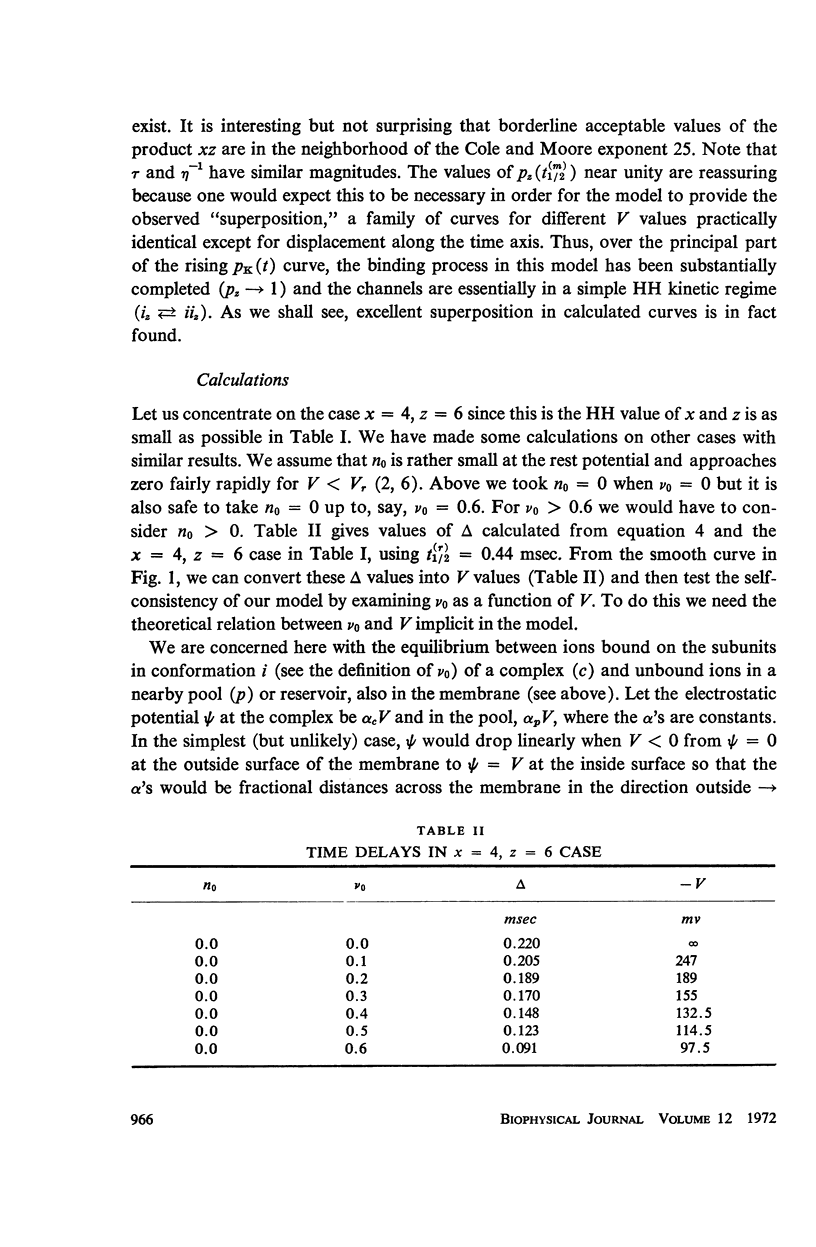
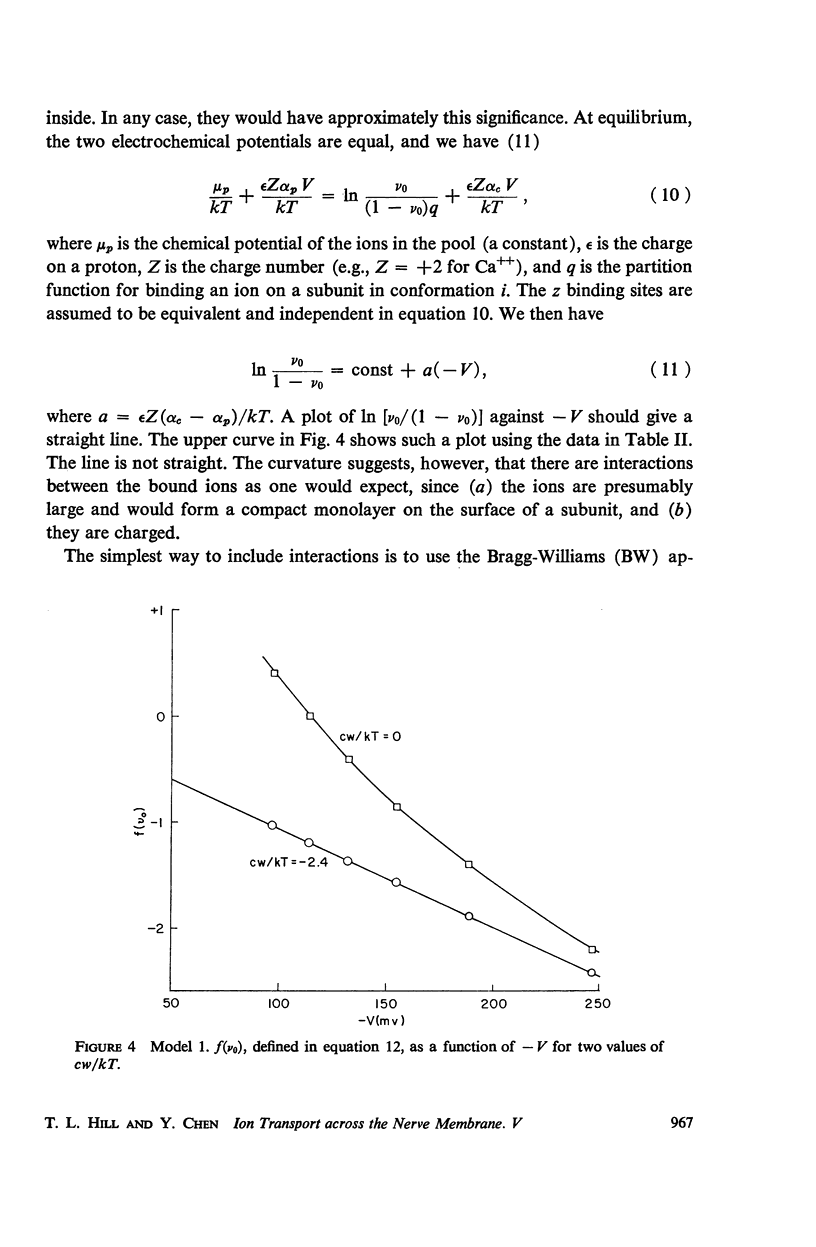
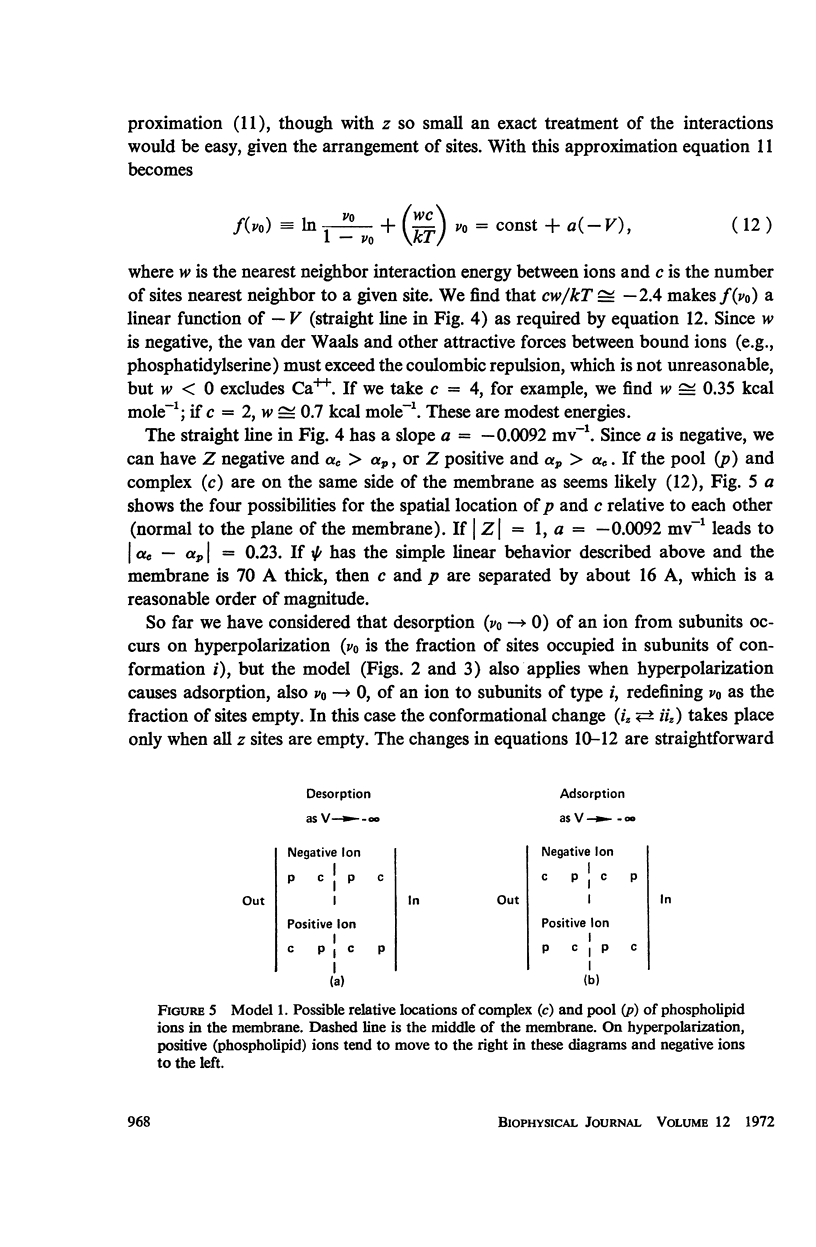
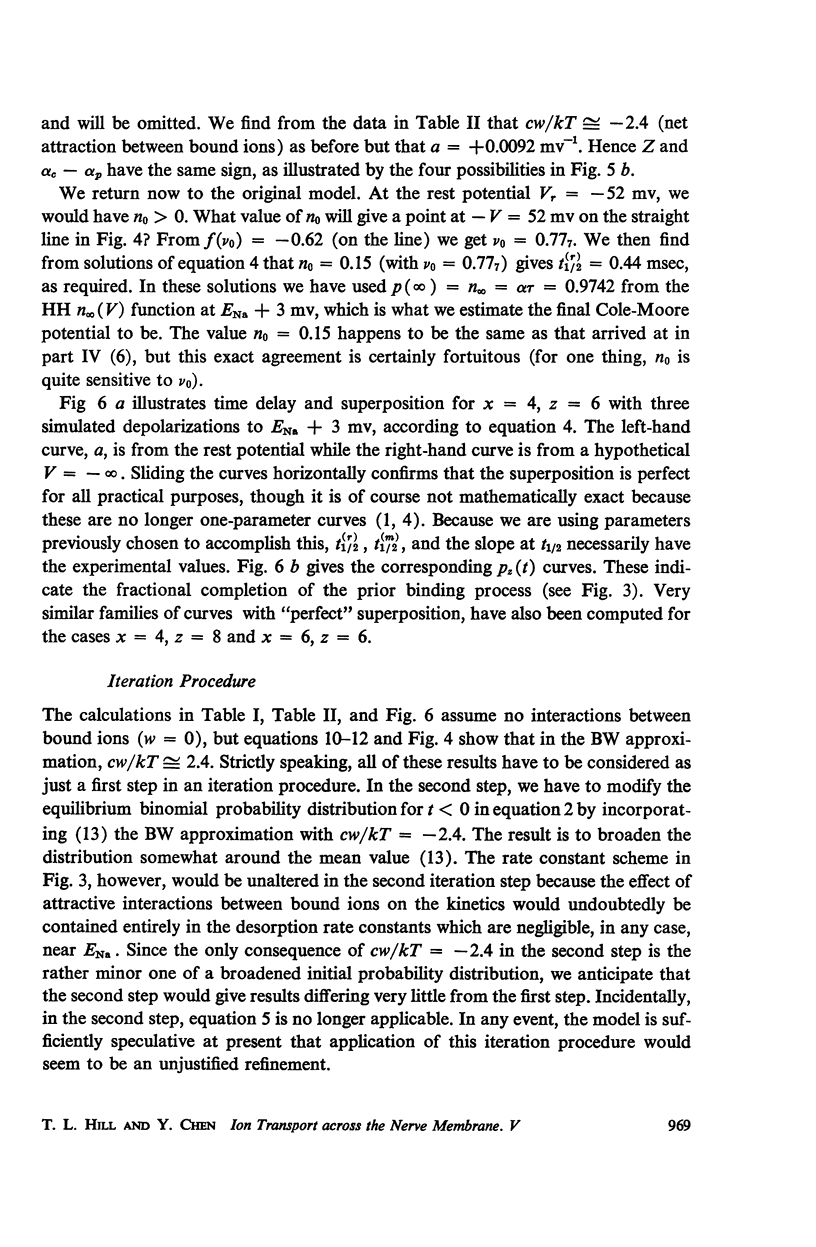
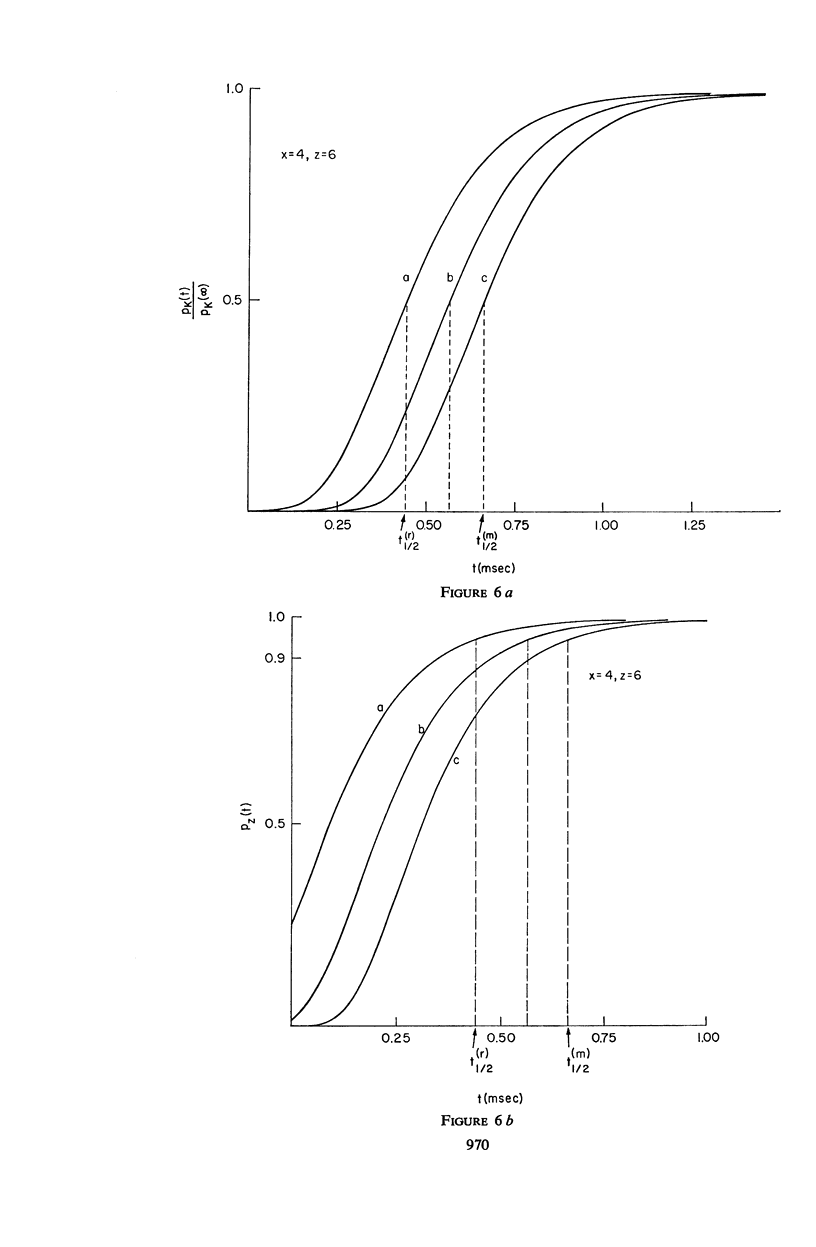
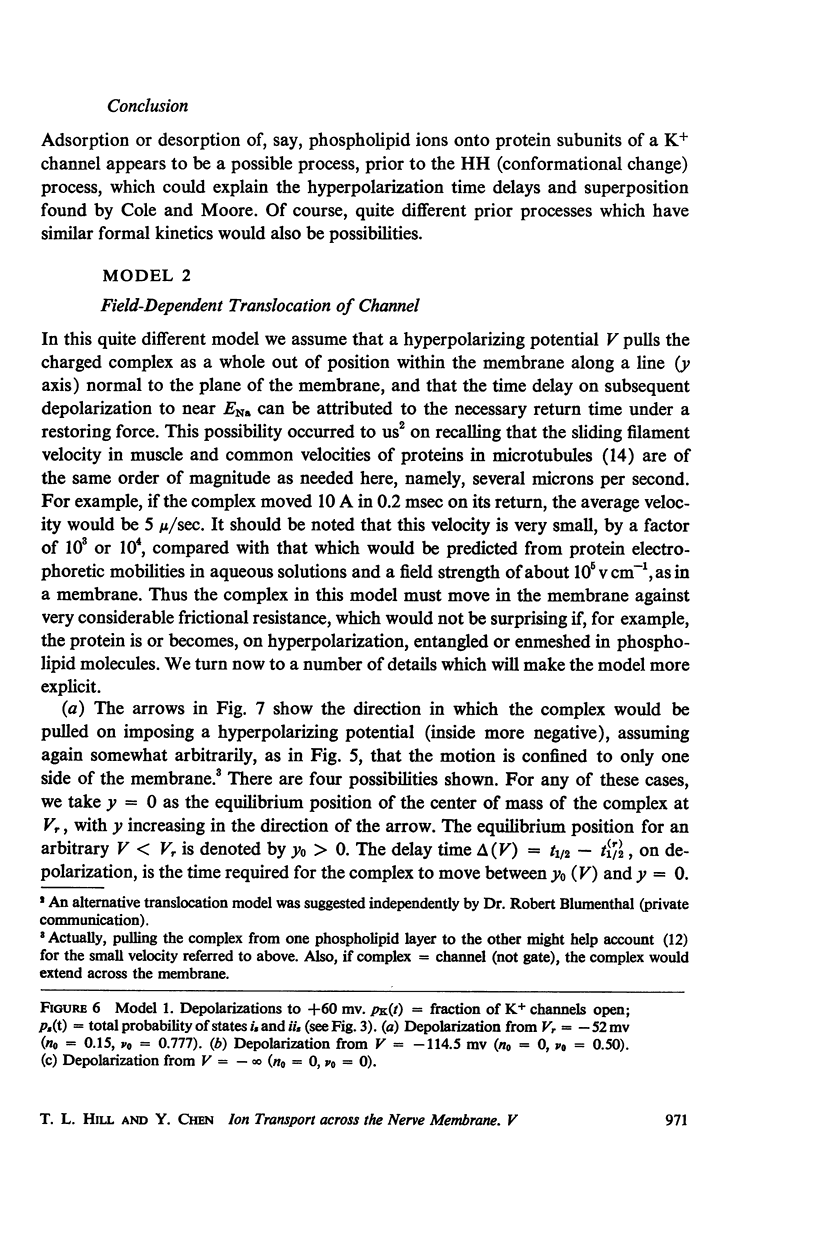
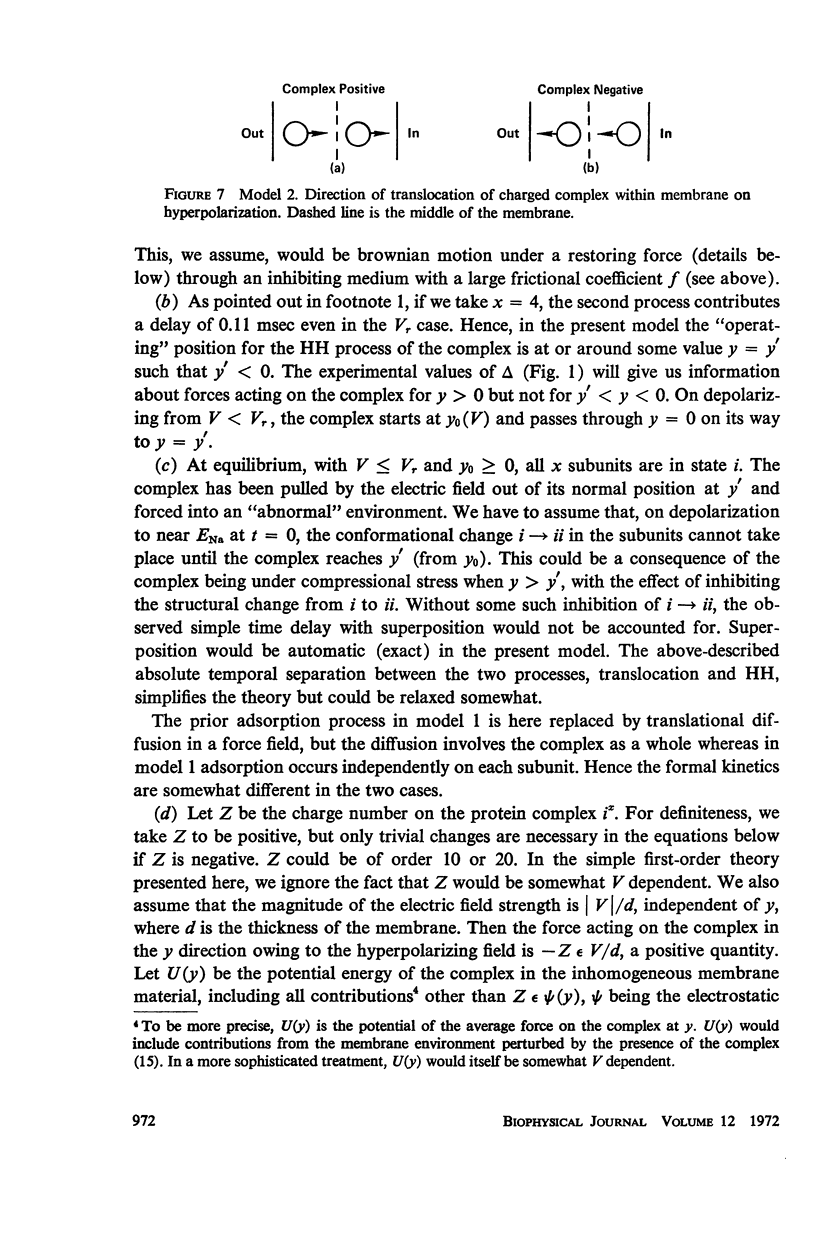
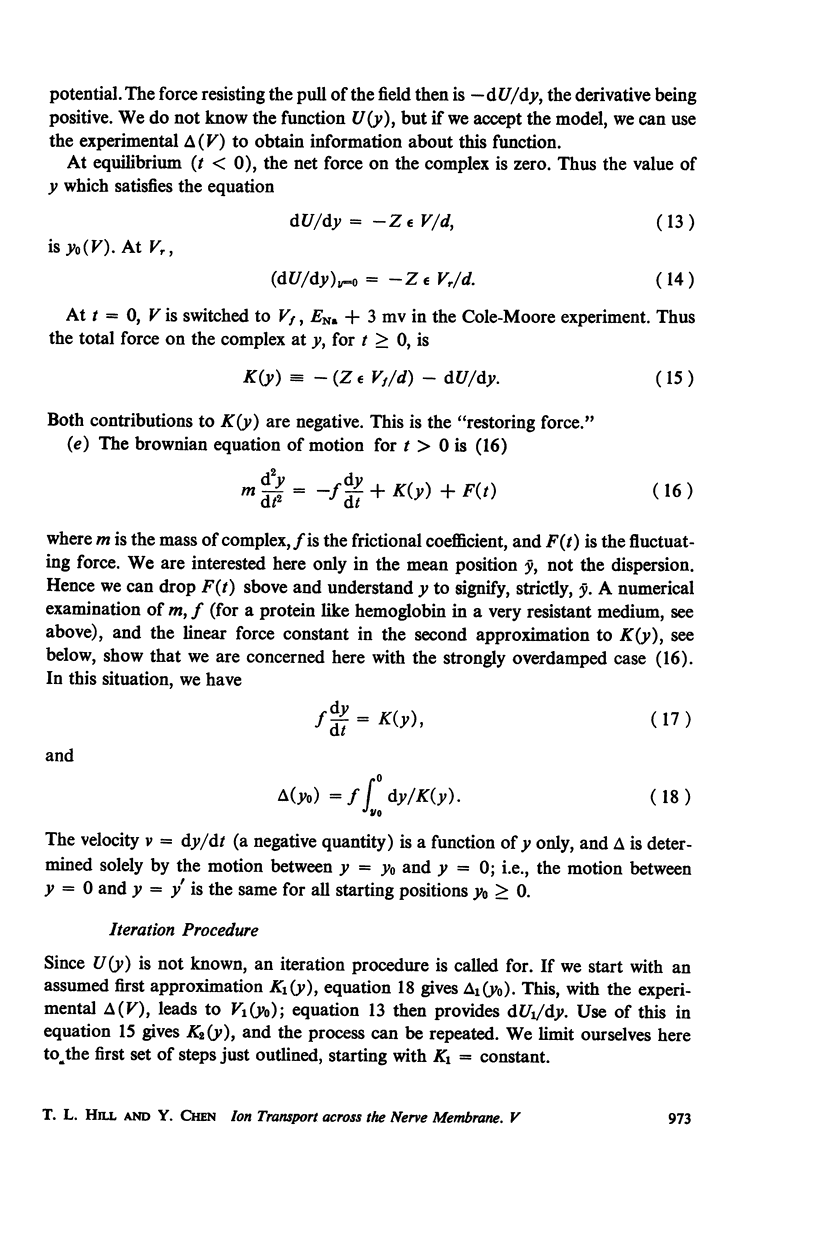
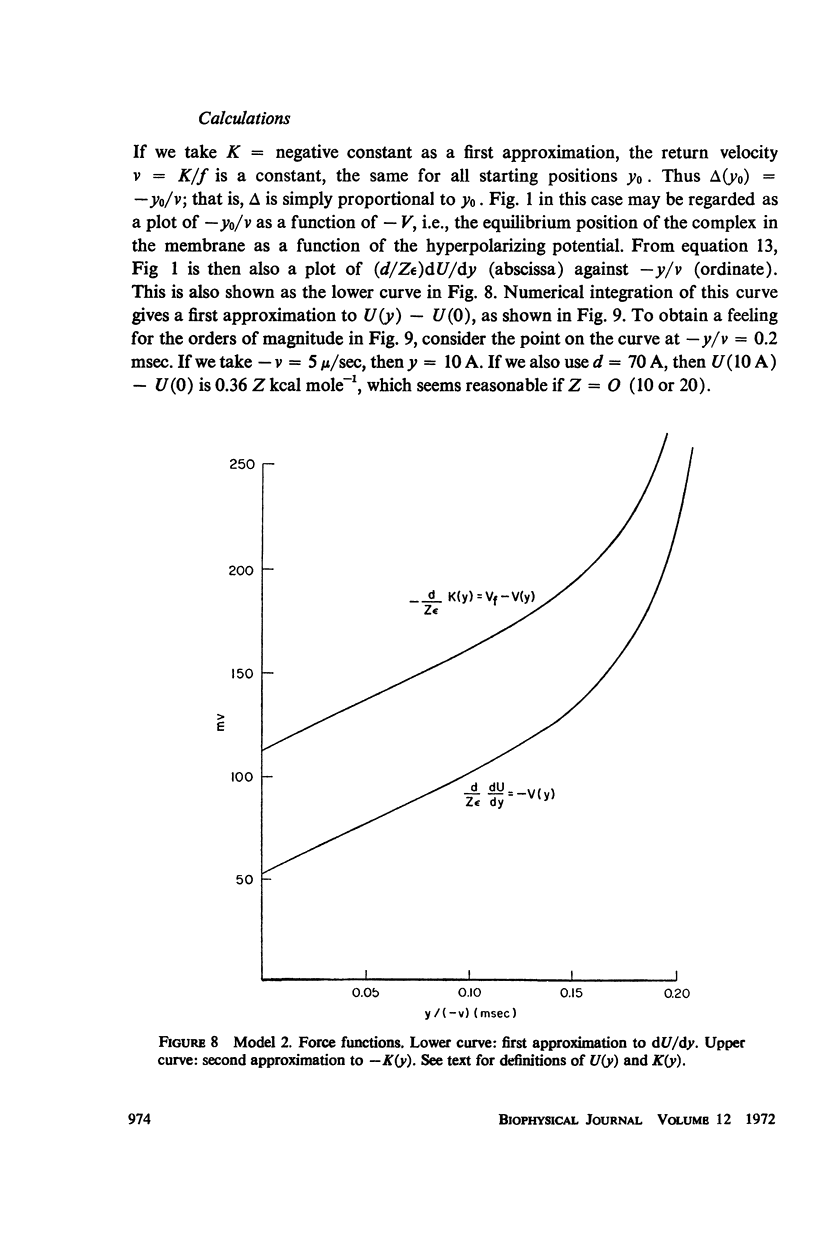
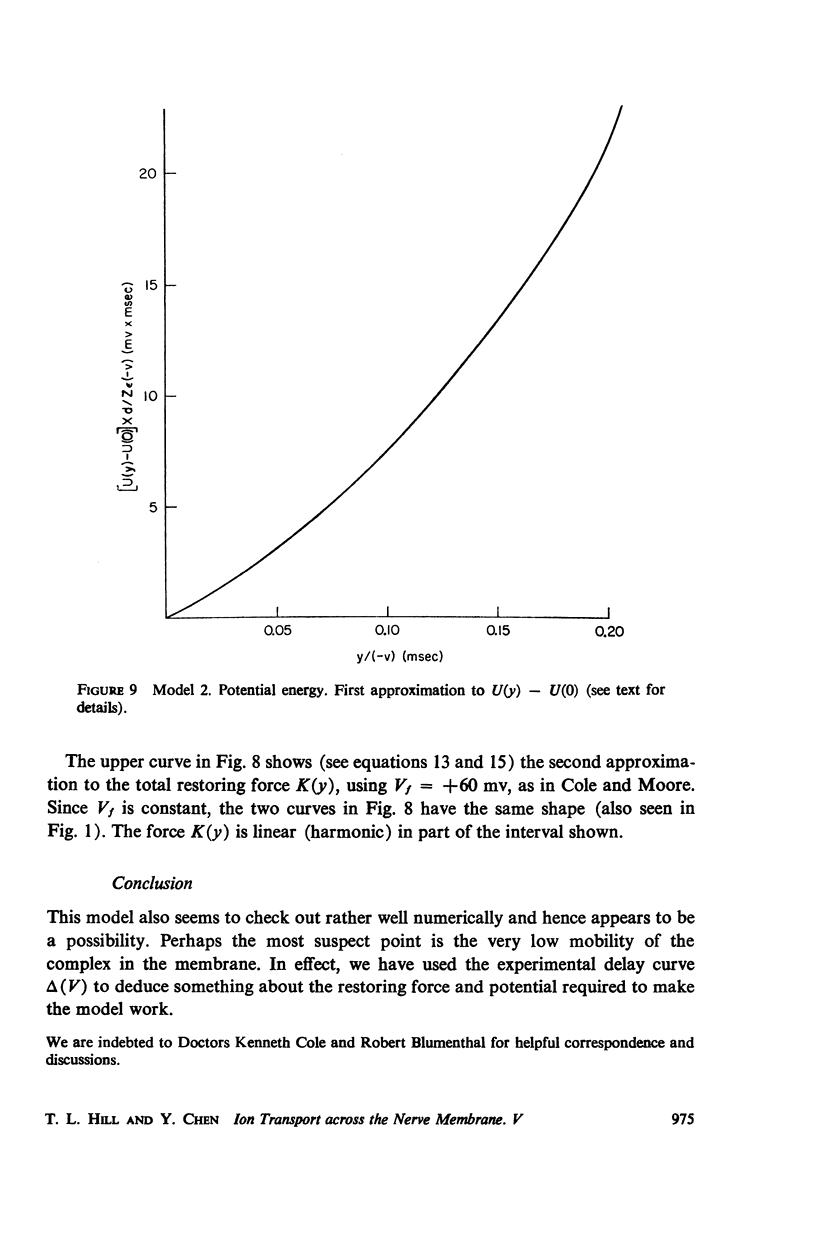
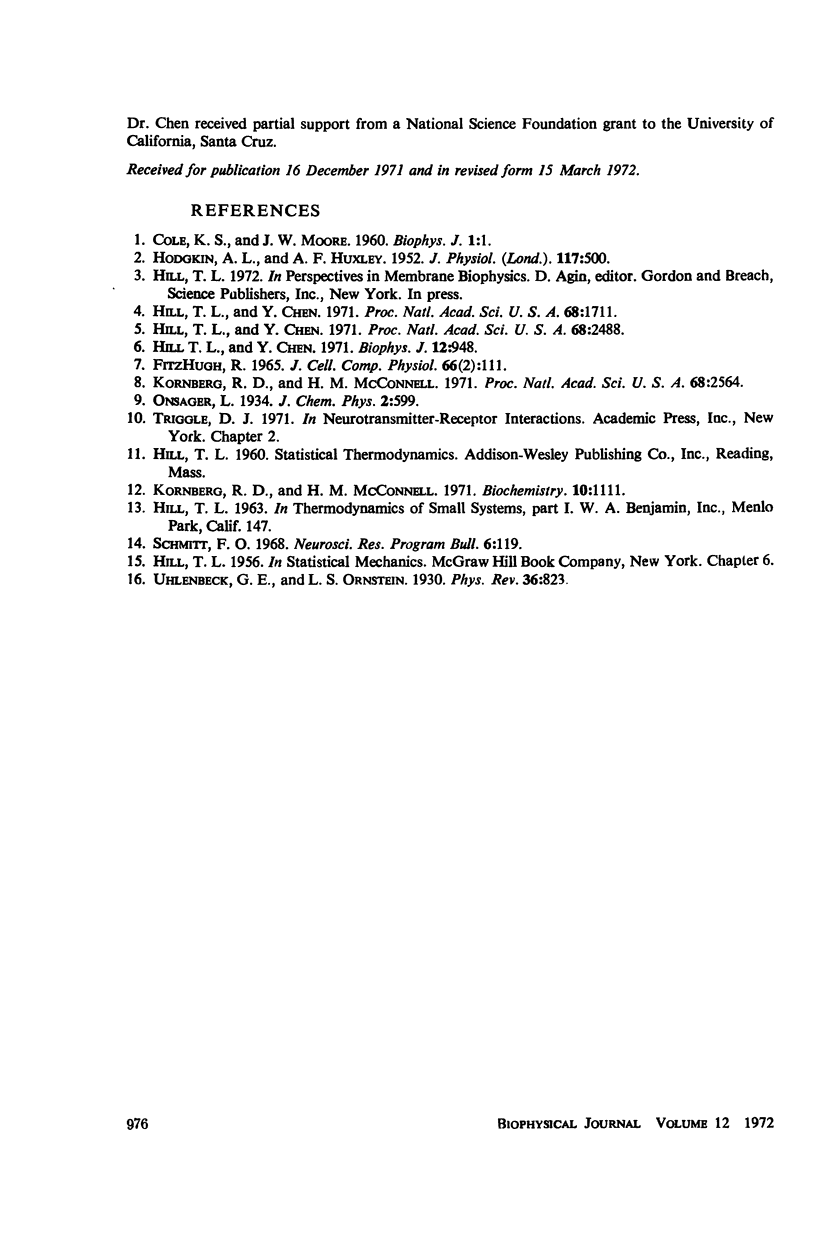
Selected References
These references are in PubMed. This may not be the complete list of references from this article.
- COLE K. S., MOORE J. W. Potassium ion current in the squid giant axon: dynamic characteristic. Biophys J. 1960 Sep;1:1–14. doi: 10.1016/s0006-3495(60)86871-3. [DOI] [PMC free article] [PubMed] [Google Scholar]
- Hill T. L., Chen Y. D. On the theory of ion transport across the nerve membrane. 3. Potassium ion kinetics and cooperativity (with x=4,6,9). Proc Natl Acad Sci U S A. 1971 Oct;68(10):2488–2492. doi: 10.1073/pnas.68.10.2488. [DOI] [PMC free article] [PubMed] [Google Scholar]
- Hill T. L., Chen Y. D. On the theory of ion transport across the nerve membrane. II. Potassium ion kinetics and cooperativity (with x = 4). Proc Natl Acad Sci U S A. 1971 Aug;68(8):1711–1715. doi: 10.1073/pnas.68.8.1711. [DOI] [PMC free article] [PubMed] [Google Scholar]
- Kornberg R. D., McConnell H. M. Inside-outside transitions of phospholipids in vesicle membranes. Biochemistry. 1971 Mar 30;10(7):1111–1120. doi: 10.1021/bi00783a003. [DOI] [PubMed] [Google Scholar]
- Kornberg R. D., McConnell H. M. Lateral diffusion of phospholipids in a vesicle membrane. Proc Natl Acad Sci U S A. 1971 Oct;68(10):2564–2568. doi: 10.1073/pnas.68.10.2564. [DOI] [PMC free article] [PubMed] [Google Scholar]


